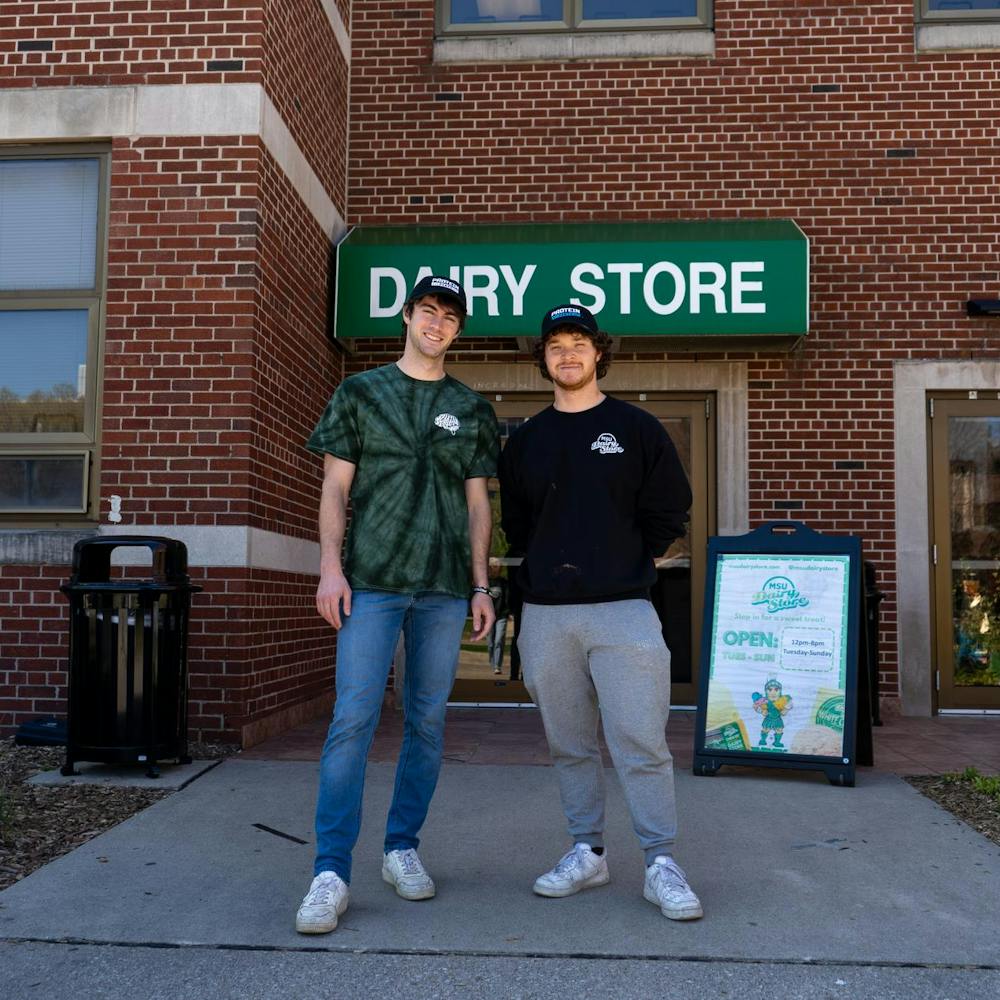Imagine working in a sweatshop, earning $3.25 an hour for 12 hours a day to produce clothing for Forever 21. Picture walking around the mall, looking at the display windows of Forever 21 and noticing an article of clothing you made. Imagine the feeling that comes with realizing the shirt you stitched for 19 cents was being sold to the public for $29.99.
For Maura, Lupe and Maria, the three central focuses of “Made In L.A.,” this degrading vision was an everyday realization.
Director Almudena Carracedo was on hand as “Made In L.A.” screened at noon Friday at the Communication Arts and Sciences Building.
The screening was made possible in collaboration with assistant professor of sociology Stephanie Nawyn and had a vast array of sponsors, including the Department of Sociology, the College of Social Sciences, the Department of Telecommunication, Information Studies and Media, and the MSU Film Collective.
Students arrived to the sight of pizza and salad and then filed into Room 134D, which was decorated as a screening room. Nawyn introduced Carracedo, who then introduced her film.
“Made In L.A.”, which is an Emmy Award-winning documentary, tells the story of the nationwide Forever 21 boycotts that took place from 2001-04. The movement, which started in Los Angeles, informed people everywhere about the exploitation and underground corruption that garment workers deal with every day.
Although the credits suggest otherwise, Carracedo informed the audience that the film was made with only a handful of people and had little funding.
“For the first four years we had no funding, so it was basically four years of fundraising where the community really came in support of the film,” Carracedo said.
Carracedo, who spent four years with the garment workers — with and without the camera — shot more than 180 hours of footage for the documentary and trimmed it down to 70 minutes for the general release.
One of her main goals was to enlighten the general public — like the boycotters themselves — about the working conditions within the clothing industry.
“What’s really shocking to us is that even though it’s a story that started in 2001, it’s completely evergreen,” Carracedo said. “It’s something that could be happening right now; in fact, it probably is happening right now.”
Tiffany Dittrich, a sociology junior, didn’t know what to expect before watching the film, but she was moved by the personal struggles of the three women.
“I thought it was a great film,” she said.
“I didn’t really know what to expect. We just knew it was a film about Forever 21 and the workers that work there, but I thought it was great. It showed a really human side to their struggle and what they go through.”
For Tom Morrissey, a journalism senior, the eye-opening aspect of Carracedo’s film was the fact that it takes place in America.
“You kind of assume when you see ‘made in America’ on something you assume, ‘Oh the workers must be paid perfectly,’ and you worry more about sweatshops being a problem for the rest of the world. And I think that’s the real important thing with the film, it kind of made me think ‘jeez, ya know, it’s happening here too.’”
The question-and-answer session lasted for about a half hour, and students and faculty had plenty to say.
With the impressive turnout and stimulating discussion, Carracedo was very enthusiastic about her visit to MSU.
“My presence here (was) wonderful,” she said. “We had very very diverse crowds from many different classes, and that’s always great to spark dialogue … I hope to come back here soon with the next film.”
To see the official trailer, click here
Support student media!
Please consider donating to The State News and help fund the future of journalism.
Discussion
Share and discuss “L.A. director educates students with film” on social media.



